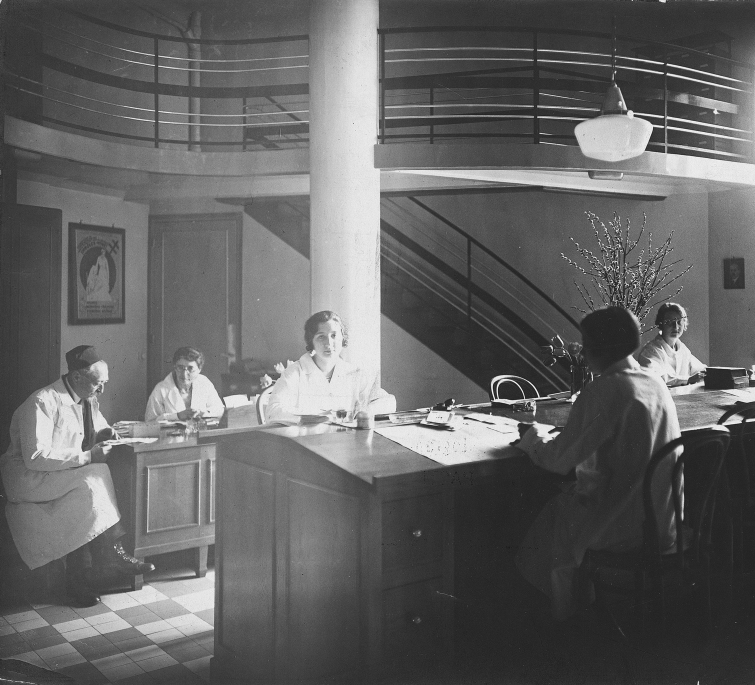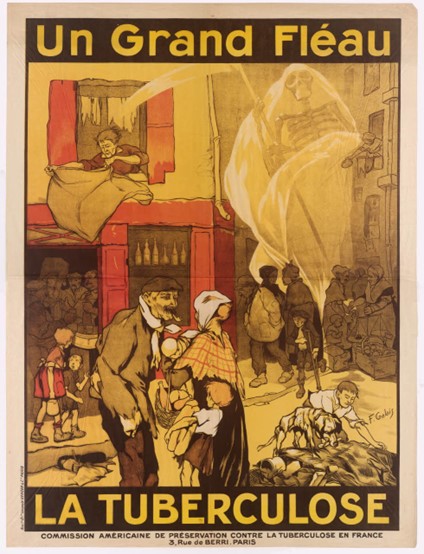
 Museum
Museum
Focus on an object from the museum for World Tuberculosis Day
The aim of World Tuberculosis Day is to raise public awareness about the global tuberculosis epidemic and the efforts being made to eradicate the disease. It takes place on March 24 every year in memory of the discovery of Mycobacterium tuberculosis, the bacillus that causes tuberculosis (TB), by Robert Koch (1843-1910) on March 24, 1882.
In 2023, TB was the second leading infectious cause of death worldwide, after COVID-19 and before HIV/AIDS.
In 1917, the Rockefeller Foundation funded a mission in France to tackle tuberculosis. The mission ran until 1923, when it was taken over by the French National Committee against Tuberculosis. For six years, the Rockefeller Foundation provided financial support to build dispensaries and employed "hygiene visitors" to raise awareness among sick and healthy people of the principles of hygiene and prevention. The aim of the mission was to break the silence around TB that was still pervasive in society, as before the war it was considered a shameful disease. The US Commission for the Prevention of Tuberculosis in France used several promotional techniques to raise awareness, including posters like the one shown below.

Poster: "A major scourge – tuberculosis," during the prevention campaign by the US Commission for the Prevention of Tuberculosis in France, 1917
The poster shows a dirty street with cramped buildings in which it was impossible even to see the sky, reflecting a stifling atmosphere. The people depicted are characterized by poverty and filth – a child and an emaciated dog are sifting through the trash. In the background, the Grim Reaper is a reminder that disease and death are ever present in this unsanitary environment.
The poster uses a variety of different styles to portray the same message: the need to protect children and society at large. It shows the city as an unhealthy environment and uses all the visual and symbolic elements of the hygienist movement.
From 1919 onwards, the government and private initiatives sought to organize efforts to tackle TB at national level and established the National Committee against Tuberculosis on December 22, 1919. The Americans, especially the Rockefeller Foundation, continued to play a decisive role in the committee, funding it for five years and urging health workers and politicians in France to respond. Dr. Linsly R. Williams, the Rockefeller representative in France, worked for the establishment of a Higher National Defense Council against Tuberculosis, incorporating administrative players, physicians and other public health figures. The establishment of the National Committee against Tuberculosis illustrates the transition from a private philanthropic model to a more institutional approach to public health in France, strongly shaped by the US intervention and the professionalization of health policies.
This poster, produced in 1917 by the US Commission for the Prevention of Tuberculosis in France, was on display until 2007 in l’ancien musée des applications et de la recherche de l’Institut Pasteur and was inventoried during the chantier-école avec des étudiants de l’Institut National du Patrimoine.
During the First World War, deaths from tuberculosis rose significantly. In the space of 12 years, from 1906 to 1918, France became one of the worst affected countries in Europe, moving from fifth to second place. The peak in mortality came in 1917, with 2 deaths per 1,000 inhabitants, before it started to decline.
TB became a priority for the many hygienist movements that sprang up. Public authorities took specific measures to tackle the disease, for example with the 1916 Léon Bourgeois Act on TB dispensaries and the 1919 Honnorat Act on sanatoriums.[1]
Robert Koch's research on tuberculosis
In 1880, the German physician Robert Koch (1843-1910) became the director of the new bacteriological research institute in Berlin. Tuberculosis was raging at that time, and scientists believed that it was caused by a combination of factors including poverty, malnutrition and unsanitary living conditions. Robert Koch cultured human tissues infected with tuberculosis, which he then inoculated in animals to observe and identify the bacillus responsible for tuberculosis – which came to be known as "Koch's bacillus" – in their tissues. Robert Koch presented his research to the German Physiological Society in Berlin in March 1882.
His discovery paved the way for further research and novel therapies to tackle tuberculosis. Koch then turned his attention to finding a treatment, working on a serum based on tuberculine, which proved to be ineffective.
The work of Albert Calmette and Camille Guérin
In 1908, Albert Calmette and Camille Guérin began their research on a weakened strain of bovine tuberculosis initially intended for veterinary use. After more than a decade of research, the first human trial was successfully conducted in 1921. The vaccine was named the BCG, for "Bacillus Calmette-Guérin."
 If you are interested in the museum project or have technical or scientific objects that can provide clues to the past activities of the Institut Pasteur's laboratories, feel free to contact the museum team:: musee@pasteur.fr
If you are interested in the museum project or have technical or scientific objects that can provide clues to the past activities of the Institut Pasteur's laboratories, feel free to contact the museum team:: musee@pasteur.fr
[1] "La Contemporaine," a library for international contemporary documentation, explores the story behind the poster at this link.
Photo : Salle du BCG, fichier et bibliothèque du BCG vers 1932. Camille Guérin est présent, à gauche.